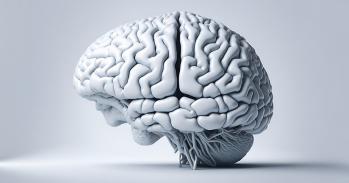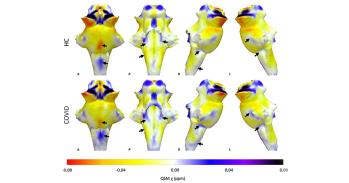
Teenage boys with symptoms of depression and raised levels of the stress hormone cortisol are up to 14 times more likely to develop major depression than those without these traits, Cambridge researchers have found.
Teenage boys with symptoms of depression and raised levels of the stress hormone cortisol are up to 14 times more likely to develop major depression than those without these traits, Cambridge researchers have found.
This could be a much needed way of reducing the number of people suffering from depression
Dr Matthew Owens
The study, published in Proceedings of the National Academy of Sciences, identified the first biomarker for major, or clinical, depression. This ‘biological signpost’ could mean boys at greatest risk of depression are treated earlier.
Clinical depression affects one in six people at some point in their lives. Until now, however, doctors have lacked a biomarker for clinical depression, partly because its causes and symptoms are so varied.
According to Professor Ian Goodyer of the University’s Department of Psychiatry who led the study: “Through our research, we now have a very real way of identifying those teenage boys most likely to develop clinical depression. This will help us strategically target preventions and interventions at these individuals and hopefully help reduce their risk of serious episodes of depression and their consequences in adult life.”
The researchers collected spit samples from hundreds of teenagers and measured levels of cortisol in the saliva, as well as self-reported information on symptoms of depression. This they used to divide the teenagers into one of four groups depending on their cortisol levels and symptoms of depression.
After following the group for 12 to 36 months, they were then able to work out which group was most likely to develop clinical depression and other psychiatric disorders.
They found boys with high levels of cortisol and depressive symptoms were 14 times more likely to develop clinical depression than those with neither. In girls, however, this difference was less marked. Girls with high cortisol and depressive symptoms were four times more likely to develop clinical depression than those with neither, suggesting gender differences in how depression develops.
The researchers hope that having an easily measurable biomarker – in this case, raised cortisol plus depressive symptoms – will allow primary care services to identify boys at high risk and consider new public mental health strategies for this part of the population.
“This new biomarker suggests that we may be able to offer a more personalised approach to tackling boys at risk for depression,” said co-author Dr Matthew Owens.
“This could be a much needed way of reducing the number of people suffering from depression, and in particular stemming a risk at a time when there has been an increasing rate of suicide amongst teenage boys and young men.”
The study in detail
The researchers measured levels of cortisol in saliva from two separate large cohorts of teenagers. The first cohort consisted of 660 teenagers, who provided four early-morning samples on schooldays within a week and then again 12 months later. The researchers were able to show within this cohort that cortisol levels were stable over one year in the population at large in both boys and girls.
A second cohort, consisting of 1198 teenagers, provided early morning samples over three school days.
Using self-reports about current symptoms of depression collected longitudinally over the 12 months and combining these with the cortisol findings, researchers were able to divide the teenagers in the first cohort into four distinct groups, ranging from those with normal levels of morning cortisol and low symptoms of depression over time (group 1) through to those teenagers with elevated levels of morning cortisol and high symptoms of depression over time (group 4) - this latter group made up one in six (17%) of all subjects. Importantly, the research group replicated exactly these four groups using the second cohort.
Because the two cohorts gave identical results, the team were able to combine them and study the whole sample of 1858 teenagers for the probability of developing clinical major depression and other psychiatric disorders when followed up 12 to 36 months later.
The teenagers in group 4 were on average seven times more likely than those in group 1, and two to three times more likely than in the other two groups, to develop clinical depression. Further analysis revealed that boys in group 4 were 14 times more likely to suffer from major depression than those in group 1 and two to four times more likely to develop the condition than either of the other two groups. Girls in group 4, on the other hand, were only four times more likely than those in group 1 to develop major depression, but were no more likely to develop the condition than those with either elevated morning cortisol or symptoms of depression alone. The findings suggest gender differences in how depression develops.
In order to demonstrate that the combination of high levels of cortisol and depressive symptoms was indeed a biomarker for a particular type of depression, the researchers needed to show that the teenagers in group 4 were different from those in the other groups. They demonstrated this using a memory test completed on the first cohort consisting of systematically recording episodes recollected from an individual's life - known as ‘autobiographical memory’ - under standardised test conditions.
Both boys and girls in group 4 were particularly poor at systematically recollecting specific autobiographical memories from over 30 example situations across different social and personal domains. For example, when given the word ‘picnic’, most teenagers give a fairly detailed account of a time when they went on a picnic and who they were with; in group 4, individuals tended to give very little, and more general non-specific, information. This supports evidence from the scientific literature that suggests that high cortisol acts to suppress autobiographical memory recall.
This work is licensed under a Creative Commons Licence. If you use this content on your site please link back to this page.





